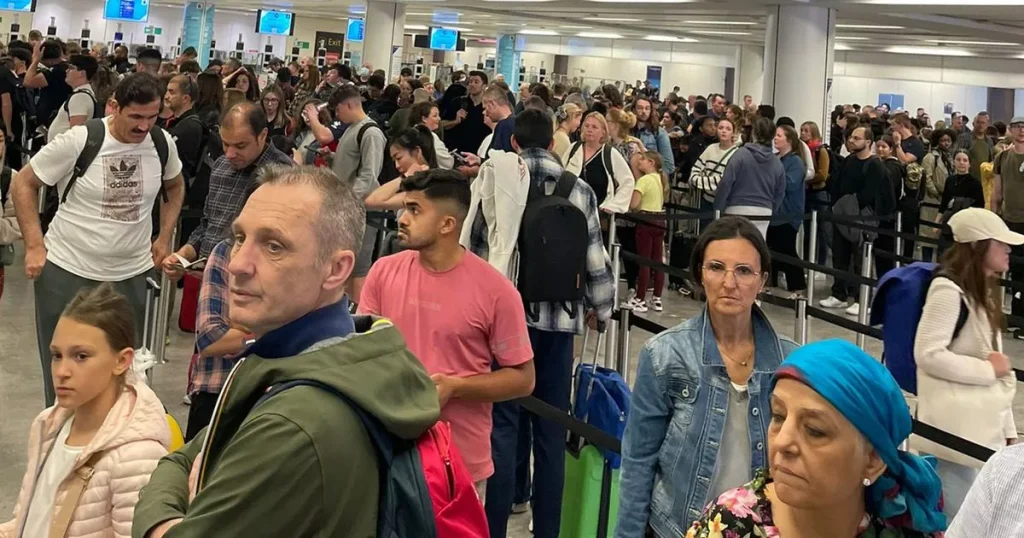Passengers at Stansted Airport and Heathrow T5 faced significant delays due to IT issues at Border Force UK, leading to long queues and frustration. Joanna Griffin described the situation as a “disgrace,” with children waiting without access to food or water. Barrister Chris was stuck on a British Airways plane at Heathrow T5, unable to disembark and facing uncertainty about when they would be allowed to leave. Passengers even faced the inconvenience of having the toilet taps run out of water, forcing them to use bottled water for basic hygiene.
British Airways advised passengers about the delays in disembarking and clearing immigration, attributing it to the IT issue at Border Force UK. The airline’s employees were working with authorities to resolve the situation and ensure passengers could clear immigration as soon as possible. However, passengers were left frustrated and inconvenienced, highlighting the lack of contingency plans in case of such incidents. The experiences shared by customers on the Mirror underscored the challenges faced by travelers, especially when dealing with unexpected disruptions and delays.
The situation at airports like Stansted and Heathrow highlighted the importance of efficient IT systems and contingency plans to manage unforeseen issues effectively. Passengers were left stranded, with no access to essentials like food and water, emphasizing the need for better support and communication during such incidents. The delays and inconvenience faced by travelers underscored the impact of IT failures on the travel industry and the need for improved infrastructure to handle such situations.
Passengers’ experiences at Stansted Airport and Heathrow T5 shed light on the challenges of traveling during times of disruptions. The lack of gates for backup, issues with computer systems, and delays in disembarking and clearing immigration all contributed to a chaotic and frustrating situation for travelers. The incident highlighted the importance of preparedness and effective communication to manage such disruptions and minimize inconvenience for passengers.
The incident at Stansted Airport and Heathrow T5 served as a reminder of the vulnerability of travel systems to IT failures and the need for robust contingency plans. Passengers’ accounts of children waiting without access to food or water underscored the human impact of such incidents and the need for better support and response measures. It also raised questions about the resilience of critical infrastructure in the face of unexpected disruptions and the responsibility of airlines and authorities to ensure passenger well-being during challenging situations.
In conclusion, the incident at Stansted Airport and Heathrow T5 highlighted the disruptions and challenges faced by passengers due to IT issues at Border Force UK. The lack of access to essentials like food and water, delays in disembarking, and the overall chaos at the airports underscored the need for better preparedness, communication, and infrastructure to handle such situations effectively. The incident serves as a reminder of the importance of resilience and support in the travel industry to ensure passenger safety and well-being during unforeseen disruptions.


